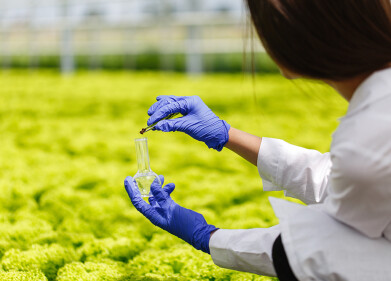PFAS analysis
Take a Look at This Map of PFAS Pollution Across the UK and Europe
Feb 23 2023
The Guardian, together with other media organizations such as Le Monde and NRC, have collaborated on a unique mapping project, the first of its kind in Europe. The project highlights that per- and polyfluoroalkyl substances (PFAS), a family of roughly 10,000 chemicals prized for their non-stick and detergent properties, have permeated water, soils and sediments through a broad range of consumer products, waste, firefighting foams, and industrial processes. The pollutants, also known as "forever chemicals," do not break down in the environment, accumulate in the body, and can be hazardous. The project reveals that PFAS has been found at high levels at over 17,000 sites across Europe and the UK. The substances have been detected at high concentrations of over 1,000 nanograms per liter of water at approximately 640 sites and above 10,000 ng/l at 300 sites. While certain areas seem to have more severe pollution issues, this could be due to better monitoring in that region or a greater willingness to share data. The data was collected from a variety of sources and every effort was made to ensure its accuracy.
Belgium has the most significant pollution levels, with PFAS discovered in groundwater at concentrations up to 73m ng/l around 3M's PFAS manufacturing site in Zwijndrecht, Flanders. Residents living within 15km of the site have been advised not to consume eggs laid in their gardens and to avoid homegrown vegetables. Furthermore, 70,000 people living within a 5km radius of the plant have been offered a blood test to look for the presence of PFAS. 3M claims that it will rehabilitate the site and has agreed to spend €571m to do so. It has also stated its intention to exit PFAS manufacturing and to phase out the use of PFAS across its product line by 2025.
In the Netherlands, an accident involving PFAS in firefighting foam has resulted in land contamination around Schiphol airport in Amsterdam, resulting in soils containing extremely high levels of PFOS. Some airports and military sites in Germany have similar problems. In the UK, the most significant PFAS levels were found in discharge from a chemicals plant on the River Wyre, above Blackpool. Fish in the river were found to have high PFAS levels, with flounder containing up to 11,000ng/kg. Sites with readings above 1,000ng/kg should be assessed urgently so that they can be remediated, according to Prof Ian Cousins, an environmental scientist at Stockholm University.
Drinking water sources in the UK have been contaminated with PFAS, according to the map. However, water companies say that the chemicals do not make it into the final tap water because it would first either be blended with another source to dilute the PFAS, or it would undergo a specialized treatment process and be removed. Data obtained from water companies and the Environment Agency show that since 2006, about 120 drinking water source samples have been discovered to contain concentrations of PFOS or PFOA above the 100ng/l level. The UK's Drinking Water Inspectorate's guidelines stipulate that water companies must take action to reduce PFOS or PFOA levels before supplying them to people's homes.
The European Chemicals Agency estimates that around 4.4 million tonnes of PFAS will end up in the environment over the next 30 years unless action is taken. In the UK, just PFOS and PFOA are regulated. In the EU, there is a proposal to regulate PFASs as one class, rather than to attempt to deal with each substance independently. The Fluoropolymers Product Group advocates differentiating between fluoropolymers and other PFAS groups, considering their diverse risk profiles and uses separately, and opposes the EU's approach of treating all PFAS as a single class.
PFAS pollution is similar to plastic pollution in that these chemicals are not biodegradable and remain persistent in the environment. PFAS levels in the environment or in our bodies may exceed the threshold that affects human health, said Prof Ian Cousins, an environmental scientist at Stockholm University. PFAS has been found to have negative effects on the human immune system, and studies have linked PFAS exposure to high cholesterol, liver damage, and certain cancers.
The European Chemicals Agency has classified some PFAS as substances of very high concern (SVHCs) and restricted their use in some applications. In the UK, the Environment Agency has recently proposed new regulations to reduce PFAS pollution.
Overall, the mapping project is intended to raise public awareness and encourage people and organizations to take action to limit PFAS pollution. As consumers, we can reduce our exposure to PFAS by avoiding non-stick cookware, stain-resistant clothing, and other products that contain PFAS. Meanwhile, industries can adopt alternatives to PFAS or seek to reduce their usage, while policymakers can develop and enforce stricter regulations to limit PFAS pollution.
Use the interactive map here.
Digital Edition
IET 35.2 March
April 2025
Air Monitoring - Probe Sampling in Hazardous Areas Under Extreme Conditions - New, Game-Changing Sensor for Methane Emissions - Blue Sky Thinking: a 50-year Retrospective on Technological Prog...
View all digital editions
Events
May 06 2025 Nuremberg, Germany
May 10 2025 Karachi, Pakistan
May 11 2025 Vienna, Austria
May 11 2025 Seoul, South Korea
Salon Analyse Industrielle & Instrumentation
May 14 2025 Paris, France





.jpg)
_(4427399123)-(2).jpg)












